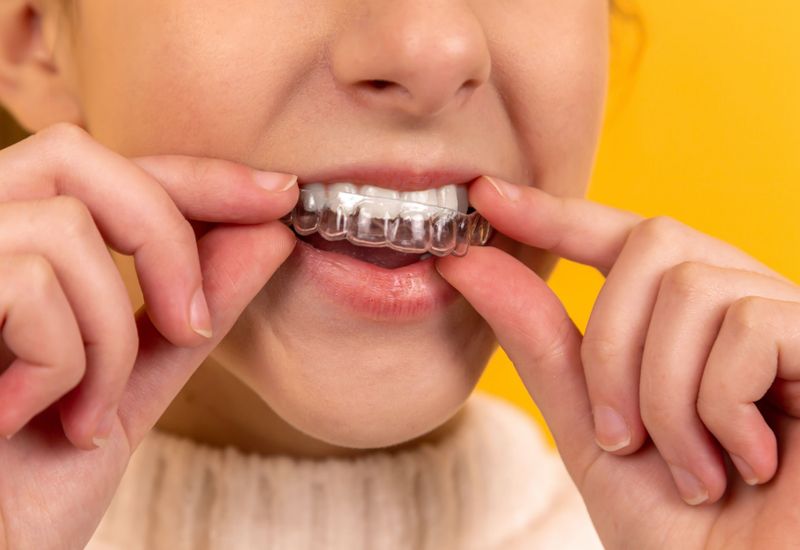Those who need braces tend to get them in their teenage years. But what if you weren't able to or didn't want to?
Teenagers are still more likely to undergo orthodontic treatment than any other demographic. However, recent years have seen a considerable uptick in the number of children and adults given braces. One in every three patients wearing braces now is an adult. This represents a shift from previous years when around one in five orthodontics patients were adults.
Besides offering cosmetic appeal, orthodontic treatments can be an integral element of oral and physical health.
Advances in dental technology mean there are many types of braces available, including inconspicuous options which are far less intrusive and visible. Contrary to popular belief, it is never too late to get braces.
How do braces work, and are they effective for adults?
Braces are commonly prescribed to teenagers as their dental bone structure is still developing. This makes their mouths more malleable, which helps with treatments. Products such as magical Byte aligners are ideal for teenagers seeking a healthy mouth structure.
There are many reasons to get braces. So, how exactly do they work?
They reduce the risk of dental issues.
Malocclusion, or misaligned teeth, make it difficult to maintain proper dental hygiene. This can cause plaque buildup in parts of your mouth or teeth, leading to possible tooth decay or gum disease.
Braces make it easier to maintain good dental hygiene by correcting malocclusion, helping to keep oral diseases at bay.
Reduced wear and tear
Misaligned teeth adversely affect your chewing capability. In extreme cases, this can render people unable to chew their food at all. It can also lead to flattened teeth and wear and tear, which affects dental enamel.
Pain relief
Having an even bite is a good thing as it enables smooth, painless dental functions.
Patients with malocclusion mostly experience issues, including Jaw Joint Disorders, associated with discomfort and clicking whenever they try to open or close their mouth.
Gum disease and bone loss solution
Poor oral health and a misaligned jaw can affect the health of your gum tissue. Adults are more likely to experience recessed gums, leading to bone loss, gingivitis, and periodontal diseases.
Misaligned teeth can make it harder to clean your teeth and gums correctly, leading to plaque buildup.
Gastrointestinal upsets
Being unable to chew your food correctly can often lead to stomach aches and pains further down the line.
What types of misalignments require braces?
Oral health professionals can treat various types of misalignments with braces. Here are some of the most common issues that require orthodontic care:
- Overbite - Overbites occur when the upper jaw protrudes further than the lower jaw. People with overbites’ smiles often look toothier than normal.
- Underbite - An underbite is the reverse condition when the lower jaw extends beyond the upper jaw.
- Overcrowding - Overcrowding occurs when there isn’t enough room for the adult teeth to align. While braces can fix many types of overcrowding, some extreme cases may require surgery or tooth extraction.
Which are the preferred braces for students?
Many adults are concerned that orthodontic treatment means walking around with a face full of metal for weeks. This isn’t ideal for people with low self-esteem or poor body image. Fortunately, there are a number of more subtle options to choose from now:
Ceramic braces
Made of polycrystalline alumina, ceramic braces are either transparent or the same colour as teeth. This makes them harder to notice, giving peace of mind to the more self-conscious among us.
Lingual braces
Lingual braces are similar to standard metal braces, albeit they are placed at the back of the mouth instead of the front. They are virtually impossible to notice.
Clear aligners
Clear aligners are plastic trays made that slip over the patient’s teeth. Unlike traditional braces, they can easily be removed and put on. It is recommended that you wear them at all times, except when you need to eat or brush your teeth.
Although they are quite effective in solving misalignment issues, most clear aligner brands are only known to treat minor (less severe) problems.
Takeaway
The field of orthodontia has come a long way in recent years. As mentioned, there are many options for students and young adults to choose from. Speak to your dentist to find out which model works best for you.
Did you have braces? Do you think you need them? Join the Student Hut Community today to get access to exclusive tips, tricks and paid surveys.













